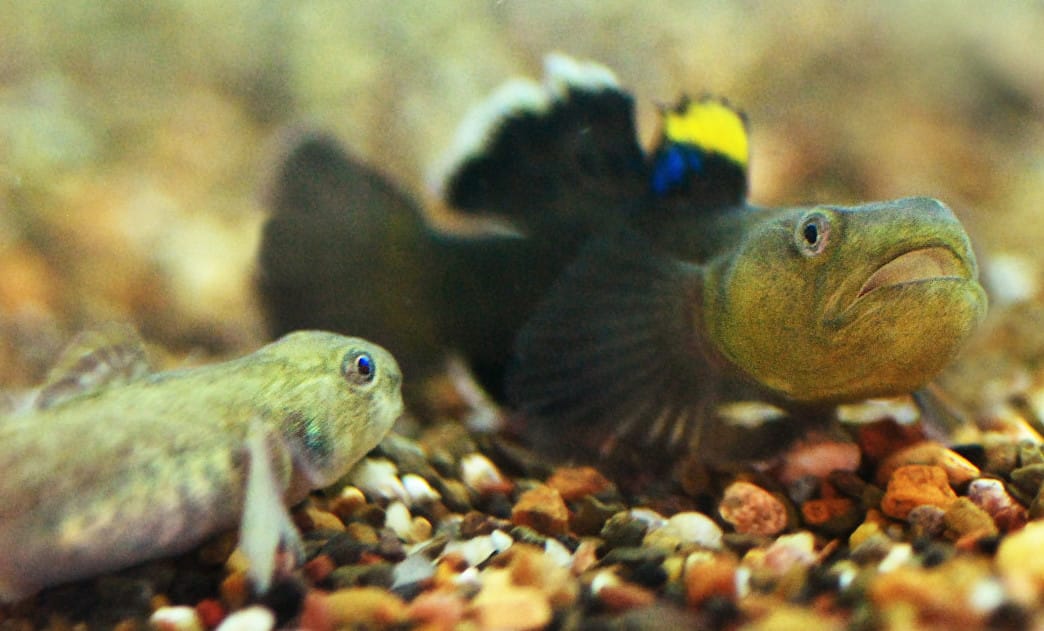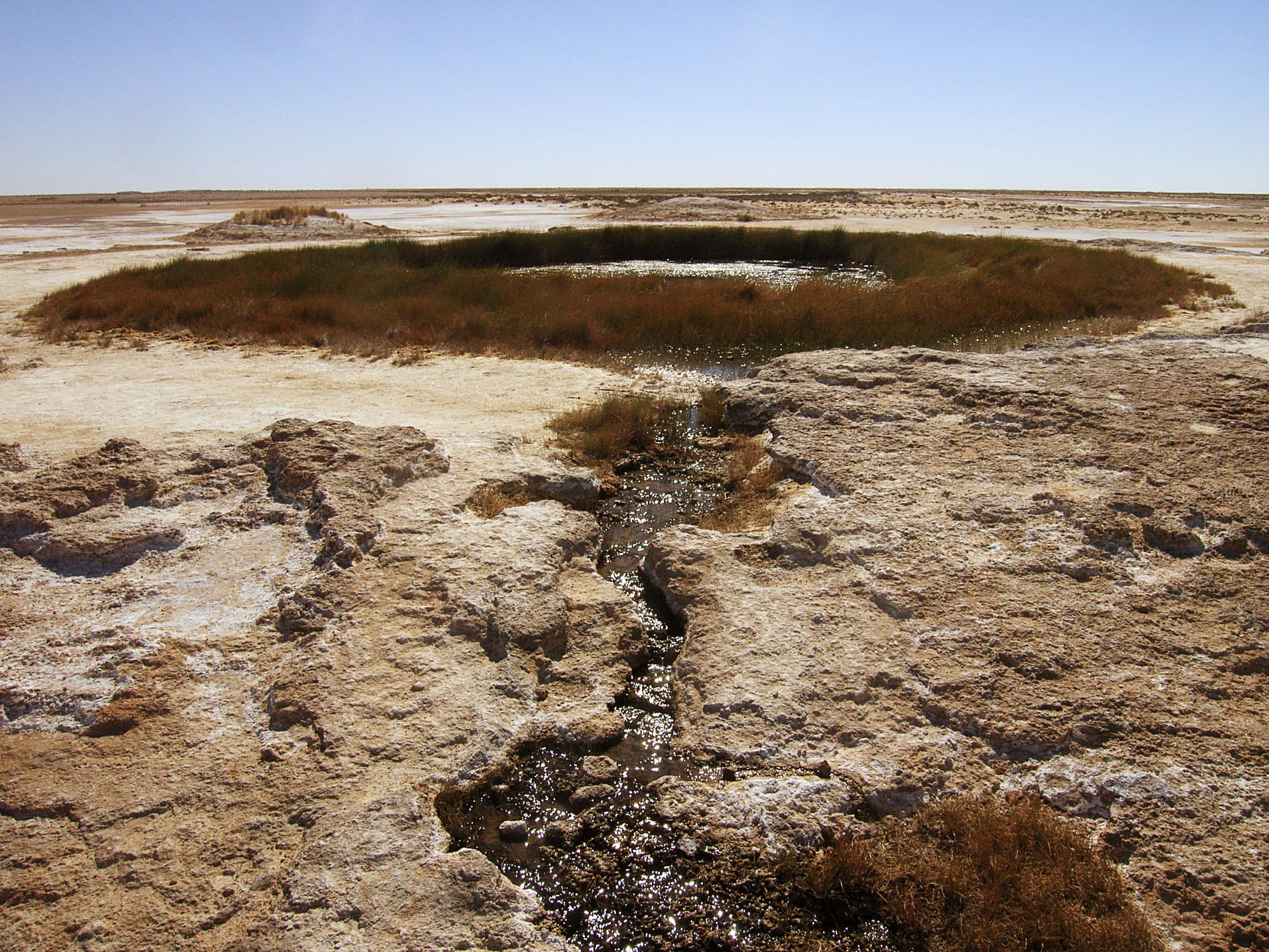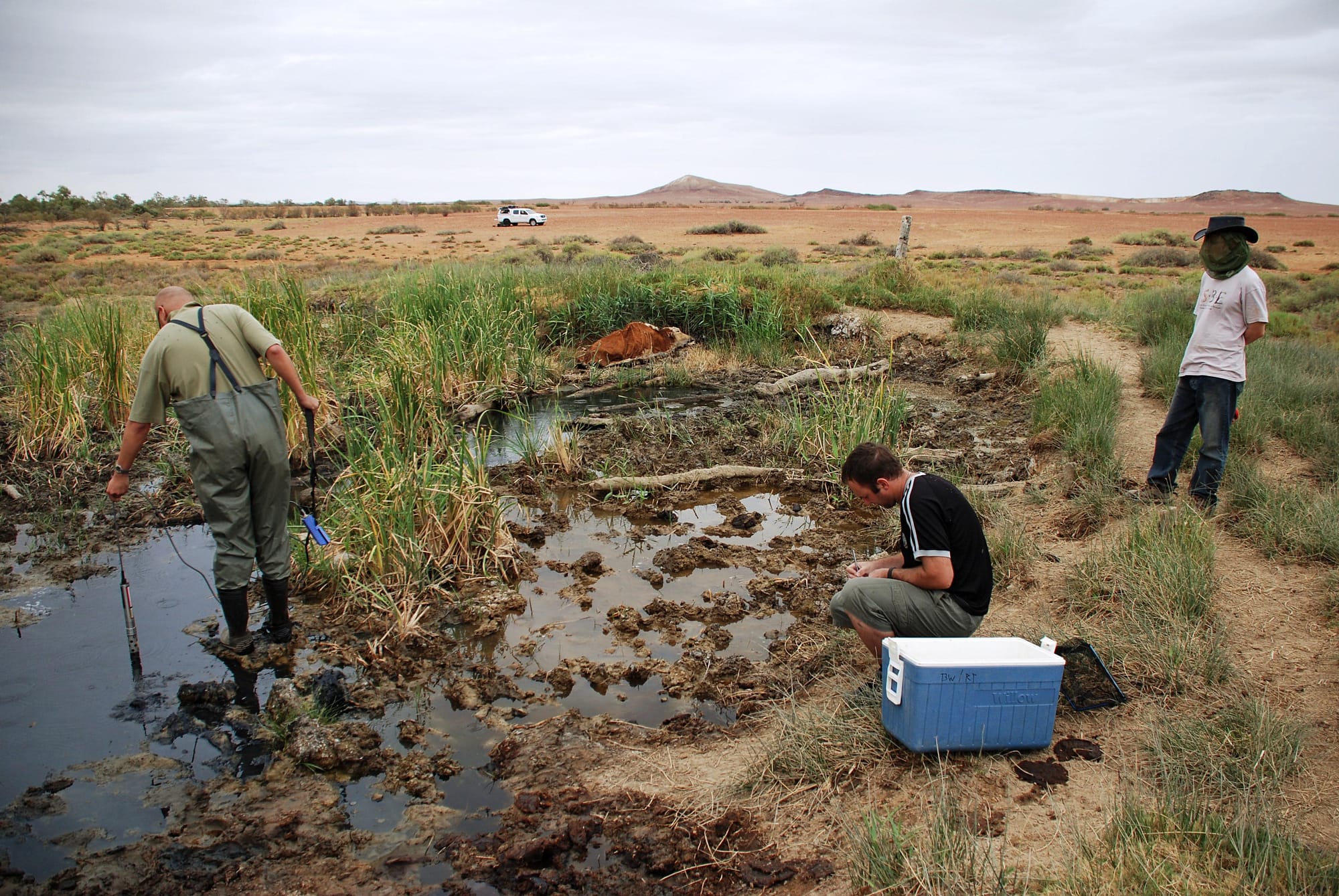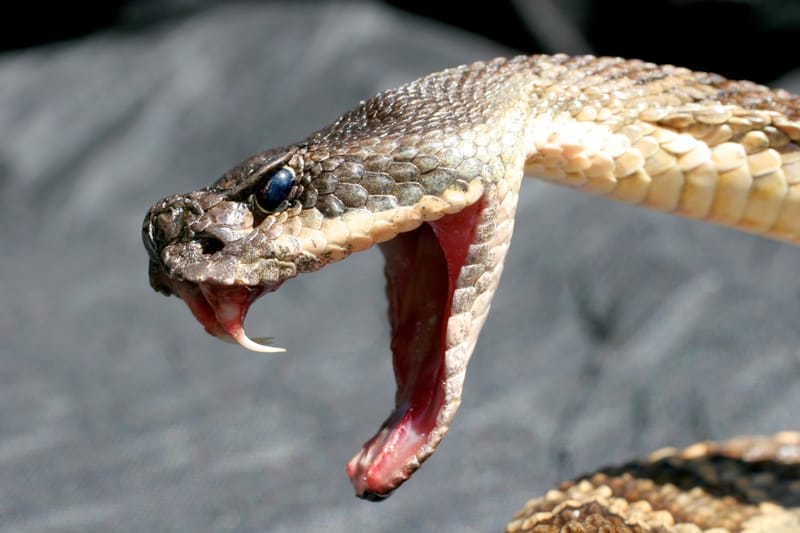
The mound springs of the Wabma Kadarbu Conservation Park along the Oodnadatta track in South Australia are a spectacular sight to behold. In a sea of desert, each spring is an oasis, providing a vital source of water for a variety of aquatic inhabitants, from freshwater snails to shrimp-like isopods. Invertebrates aside, some of these springs are also home to a most unusual fish, the desert goby (Chlamydogobius eremius).

Little Aussie battlers
Although conditions within the mound springs (right) are relatively stable due to the supply of fresh water from underground, this is not always true of the waterholes and ephemeral rivers that desert gobies also inhabit. However, desert gobies are remarkably adaptable and are able to withstand conditions that most other fish species would find extremely difficult to survive.
For example, desert gobies are able to tolerate extremely low oxygen conditions by gulping air from the water’s surface. They are also tolerant of a wide range of temperatures.
Another amazing adaptation is their ability to survive under highly saline conditions, with fish inhabiting water that can be more than three times the salinity of the sea. The capacity to tolerate such environmental extremes is especially important for gobies inhabiting less permanent water sources, allowing individuals to survive deteriorating conditions while waiting for the rains to arrive.
Go-go gobies
Rainfall is scarce in the desert. However, heavy rain events have the capacity to completely transform it. With the rains, dry riverbeds begin to flow once again. And because the landscape is so flat, huge tracts of land are often flooded, connecting aquatic habitats that are otherwise isolated by impenetrable desert. Evidence from our recent population genetic studies suggest that desert gobies are able to take full advantage of these floodwaters to help them to disperse across the landscape.
Specifically, gobies inhabiting disparate habitats were genetically similar, demonstrating that populations are much more connected than anticipated – and underscoring the importance of flood events in moving gobies around the desert.
Although some populations may come together during times of flood, this is not always the case. In some parts of central Australia, gobies living in distant habitats have been isolated for a very long time. So long, in fact, that they've evolved into different species. Scientists currently recognise no fewer than five different species of desert-dwelling Chlamydogobius.
Bringing up babies
Simply surviving out in the desert is not enough. Individuals also need to be able to find a mate and successfully reproduce. Like many other animals, desert goby males are larger than females. They are also more brightly coloured. Such traits have evolved as a direct result of competition among males for the opportunity to mate with females.
In desert gobies, males compete with other males for nesting sites under rocks in shallow water, which they'll vigorously defend against intruders. Males that are successful in securing a nest site must then attract females. They do so using their bright colours and flashy courtship displays. If a male is successful in his efforts, the female will follow the male into the nest and deposit her eggs, which the male then fertilises.

In desert gobies, it’s the male that looks after the eggs. After spawning, the female will leave the male and take no further part in caring for the young. The male, meanwhile, will guard the eggs from potential predators. In order to ensure that the developing young have access to freshly oxygenated water, the male will fan the eggs with his pectoral fins until they hatch.
Fishy future?
Despite their remarkable ability to survive under extreme environmental conditions, desert-dwelling gobies face an uncertain future.
Water is a valuable resource in the desert. It's needed not only by wildlife, but is also relied upon by rural communities right across the region.
Damage by trampling cattle, the tapping of ground water for industry, and the introduction of feral animals and plants can cause irreversible damage to the watery homes that gobies inhabit.
Alarmingly, with more water being used for human activities, several mound springs have now stopped flowing. With the extinction of these springs, many of the animals that rely on them could also disappear. It's therefore important that we look after the delicate environment in which gobies are found because, as tough as gobies may be, even they can’t survive without water.
Related:
In this video Bob Wong gives 'Thanks to all the fish' as they help to provide the answers on how animals can adapt their reproductive behaviours to ensure their survival in an ever changing environment.





